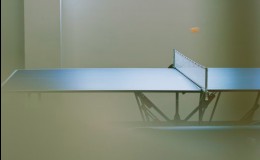 The best facet of this year's Duleep Trophy tournament was how it got many of the cricketers who were not in the mix during the tour of West Indies to get their competitive juices flowing again. Staying away from the sport for a couple of months could dull the edge as much as it could play tricks on the ball judgement. Thus, long-drawn four and five day matches, as Duleep Trophy games panned out, was actually good preparation for cricketers looking forward to the hectic Test series at home and for the others to slip into their Ranji Trophy routine for the forthcoming season.
The best facet of this year's Duleep Trophy tournament was how it got many of the cricketers who were not in the mix during the tour of West Indies to get their competitive juices flowing again. Staying away from the sport for a couple of months could dull the edge as much as it could play tricks on the ball judgement. Thus, long-drawn four and five day matches, as Duleep Trophy games panned out, was actually good preparation for cricketers looking forward to the hectic Test series at home and for the others to slip into their Ranji Trophy routine for the forthcoming season.
India play 13 Tests at home this season and as such, need to groom and nurture a good bench strength in anticipation of various eventualities, including injuries, loss of form etc. But did Duleep Trophy aid in that? Certainly, the one batsman who benefited substantially from the matches was Cheteshwar Pujara. The opposition, particularly India Red and India Green went blue in the face as he plundered them for scores of 256 no,166 & 31. Naturally, thanks to his bountiful scores, his team India Blue literally batted the opposition out of the competition.
The Duleep Trophy, once the premier domestic tournament where aspiring youngsters were put through the grind has now come to resemble a falooda- the pink comes from the ball, and an assortment of colours, red , blue and green are the teams to which no cricketer in this country owes allegiance. Nobody would have cared for a tale of these new concoctions' tussle for an old trophy, except that the colour of the ball added a new dimension to it. The Duleep Trophy, now being fought with a pink coloured ball, was meant to be the first of many experiments before the ball was unleashed at the Test level.
First impression from the players is that it made the contest extremely lopsided. When the pitches were green and conditions dry, the pink ball swung prodigiously in favor of the bowlers. But when it became wet, there was nothing at all for the bowlers. The experiment on pitches sporting less grass was disastrous for the bowlers. A couple of the players revealed that the ball went soft after the initial overs and there was nothing in it for the bowlers. They could not get it to reverse swing or even move it off the seam.
Under these circumstances, except in the first innings of the first match between India Red and India Green, where the teams were bundled out for 161 and 151 respectively, the batsmen were almost always on top. In that match, rain interruption and wet outfield neutralized the swinging properties of the pink ball and ensured that the batsmen got back into the groove, as Red's second innings total of 486 reveals.
Overall, India Blue, who emerged champions, simply batted their opponents out of the competition. Besides Pujara who was in ominous form, opening batsman Mayank Aggarwal (161 & 58, 92, 57), Sheldon Jackson ( 105 & 79 no, 134, 48 no) and skipper Gautam Gambhir ( 90 & 59, 94, 77) ensured the team was never short of runs. This string of tall scores so disheartened the opposition that they just refused to respond to the fight.
One cricketer said that most of the players were enthusiastic about the experiment with day/night cricket and the pink ball. But they were worried that an afternoon start on a flat track would be too heavily loaded in favour of the batsmen. "The contest must be more even. Sporting tracks would make the matches interesting. The Noida pitch was designed for a run feast," he said.
The jury is not yet out on the pink ball. Perhaps more matches in Indian conditions would help the manufacturers tweak it to make it more balanced. Until then sit back and have a ball with a lot of red and a bit of white.









